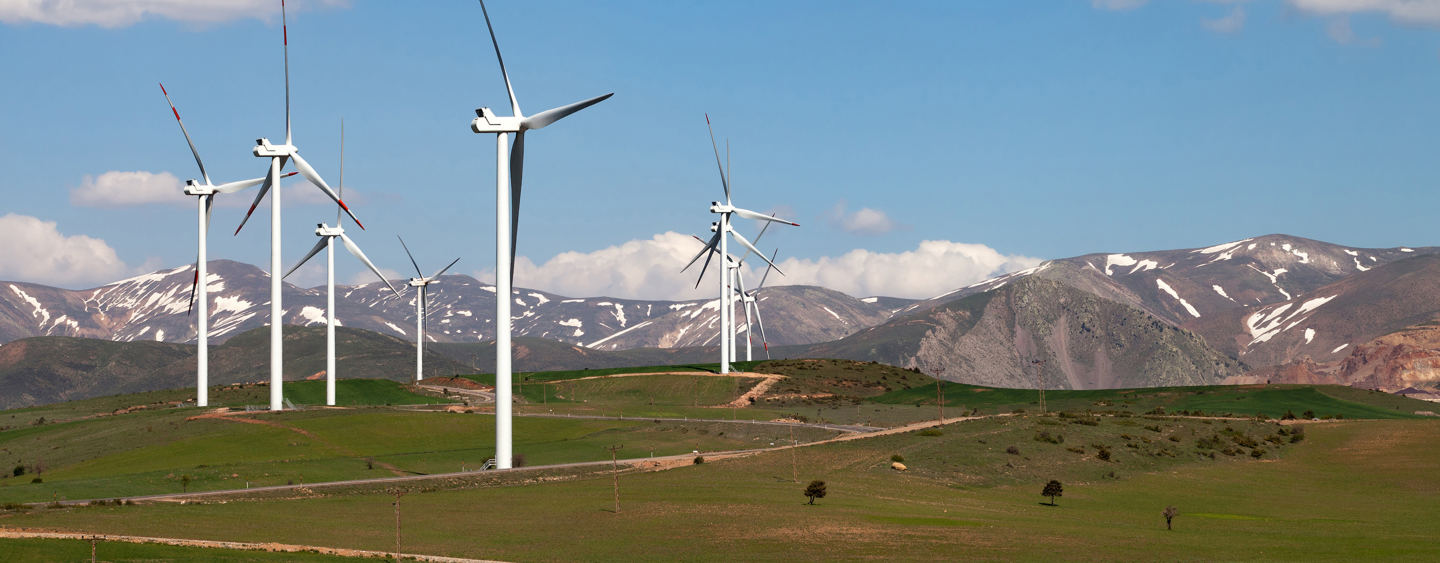Onshore and offshore wind power is one of the fastest growing energy sources in the world.
In 2013, wind contributed 318 GW of generation capacity. By 2019, that number had nearly doubled to 650 GW, according to the World Wind Energy Association (WWEA).
Wind turbines offer power producers many benefits, however, there are challenges in turning increased installed capacity (GW) into wind power yields (GWh), and this is top of mind for owners, operators, investors and end-consumers. This article discusses how Hitachi Energy’ asset performance management (APM) can help tackle these important challenges.
Benefits of wind power
The rate of installation for new wind power around the world has been hovering around 10% total installed capacity for the past four years, per the WWEA.
In 2019, the rate was 10.1% with China, the United States, and Germany the top three producers worldwide at 237 GW, 105 GW, and 61 GW installed capacity respectively. In Asia Pacific, frontrunners are Australia (51 GW), Japan (35 GW), and South Korea (13 GW).
Why is world wind capacity on a growth trajectory?
There is widespread support for sustainable and renewable energy and the transition to climate neutrality. Unlike power plants that rely on coal or natural gas combustion, which emit particulate matter, nitrogen oxides, and sulfur dioxide, wind power does not add greenhouse gases or other emissions to the atmosphere.
The key drivers for energy transformation
Source: IRENA 2019b
At the same time, the technology to enable wind capacity has advanced and the cost of installing wind farms has continued to drop: According to IRENA, 2019, onshore wind power levelized cost of energy (LCOE) declined by 39%, offshore wind by 29% between 2010 and 2019 – mainly enabled by new technology deployment. Harnessing wind to power an energy grid has become more cost effective.
Yet, it still must compete with other renewable and non-renewable sources of generation such as solar, nuclear, hydro and thermal.
This is where some of the challenges for wind producers come into play.
Challenges for wind power producers
Even as the cost of wind power has declined, there is increasing pressure on independent power producers (IPPs) in both regulated and deregulated markets to reduce the levelized cost of energy (LCOE).
Regardless of whether the wind power is onshore or offshore, these projects must still compete economically with the lowest-cost source of electricity available.
In the most current regulations across Asia, a wind power producer bids a certain dollar amount for a unit of power as part of competitive project auctions. They then need to manage their wind farms over the lifecycle of the assets to remain below that dollar amount to make a profit. As the assets age, maintaining the levelized cost of wind energy becomes more difficult.
Wind power is no longer brand new.
An increased number of the turbines in use today were installed over 5-10 years ago in Asia or over 20 years ago in Europe and the US. Most of them have reached the end of their manufacturer equipment warranties and are going to exit popular full-service performance warranty contracts, (which can be time-based or yield-based and, for example guarantee 99% up-time or 97% yield). This puts the burden of repair and maintenance on the owners and operators, increasing O&M risks but also offering cost-saving advantages.
Wind turbine system reliability is one of the most critical factors in the success of the wind energy project. Poor reliability directly affects both the project’s revenue stream through increased O&M costs and reduced availability to generate power due to wind turbine generator (WTG) downtime. A WTG failure or unplanned downtime when wind speeds and/or current market prices are high will negatively impact the business’s bottom line.
Improving reliability and uptime with APM
To improve overall reliability and uptime of WTGs, wind power operators need to make better use of their scattered asset data.
Inputting the breadth of information about WTG assets into an APM system gives operators real-time insights drawn from condition monitoring, IoT sensors, manual data entry, field inspections, and other asset data sources.
Incorporating historical data as well, the APM uses machine learning and advanced data analytics to identify hidden risks and unhealthy aspects of the fleet, enabling the operator to forecast asset health in the short-, mid-, and long-term.
With the ability to prognosticate what will happen to the asset or its individual components, the operator can increase wind turbine uptime, avoid downtime, and reduce ineffective reactive maintenance practices. Moving to a condition-based maintenance model, the operator can plan to get higher revenues by scheduling needed work during times of low wind energy availability and/or when wind market prices are low.
Maintaining WTGs is challenging and has – with above-mentioned global installed base, led to the formation of a highly specialized industry for WTG O&M. With WTG hub-heights now up to 150+ m above ground, often typically in remote locations, it can take five to ten days to replace key components Yet with APM insights, the operator can identify, prioritize and resolve risks before they materialize.
I will talk more about these advantages in my next blog and you may find this discussion of wind power and APM of interest.
Hitachi Energy is uniquely positioned to serve customers for the energy transition. By combining unique capabilities across sustainable energy and advanced digital technologies, we embrace the spirit of innovation that helps us serve our customers.
We provide components to turbine manufacturers as well as everything needed to connect wind farms to the grid. As a leader in the wind industry, we have supplied generators, electrical panels and low-voltage products for more than 40,000 wind turbines worldwide. We have also delivered tens of thousands of transformers and hundreds of wind farm substations.
To discuss your wind power requirements, please contact us today.

